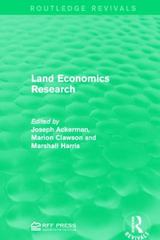I NEED HELP WITH THESE QUESTIONS
Credit Market Equilibrium under Multiple Armin: Choices In problem I and 2. the lender faces a single borrower who has a choice between two activities. In problem i. the lender offers limited liability loans under symmetric information. In problem 2. the lender otters limited liability loans under asymmetric information. The following assumptions describe the borrower and lender throughout questions I and 2. Between Isaac is an aspiring entrepreneur in Uganda. He is deciding between two investment projects. Both projects are risky and require an investment of$l00. He does not have any money. so he needs a loan in order to undertake one of the projects. He will take a loan as long as he can earn expected income of at least zero. The two projects have the following characteristics: 1 I Project 1 consists of opening TokeaA~WakandoWiid-Side. a tourist company that provides guided walking tours through Bwindi National Park in southwest Uganda. where the movie Black Panther was lmed. Given the worldwide popularity of Black Panther. this project is relatively safe: with 70% probability. it succeeds and generates $240 of revenue. and with 30% probability. it fails and generates only $100 of revenue. I Project 2 consists of opening Af-C'AN', a factory that makes recyclable cans using the shells from ground nuts {peanuts} that are typically discarded by farmers in Uganda. This project is much riskier as climate change has increased the risk that the ground out harvest fails in Uganda. Specically, with 30% probability, it succeeds and generates $400 of revenues, and with 70% probability. it fails and generates only $00 of revenues. Lower; Anderson is Isaac's rich friend who may offer Isaac a loan. If Anderson offers Isaac the loan. he would have to withdraw $100 from his savings account where he is currently earning a 10% interest rate, According to local regulations. loans in Uganda are limited liability and work as follows. If Isaac's project succeeds. he must repay 100% of the debt obligation {principal plus interest): however. if his project fails. he only has to repay 50% of the total debt obligation. For example. if the interest rate is 30%. Isaac would have to repay 0.50'( l+0.3}'100 if his project fails. I. Emmett-it: later-matters. We begin by assuming that lenders have Symmetric information. This means that Anderson can specify which project Issac must select. and he can enforce this selection. A credit contract thus species two terms: the Project and the interest rate. {a} Derive expressions for E01) and Etyg). the expected value of Isaac's income under the two projects. Report your answers in intercept-slope form. For example. for project 1. report E (311) = A - Bl. where A and B are numbers that you calculate. [b] Derive expressions for E (in) and E (112}. the expected values ofAnderson's prots on a loan to Isaac when Isaac does Project 1 and 2 respectively. as functions of the interest rate. 1'. Report your answers in intercept-slope form, For example. for a loan that nances project 1. report 3011} = A + Bi. where A and B are numbers that you calculate. (e) If the credit market is characterized by monopoly: i. What is the equilibrium interest rate charged by Anderson? ii. Which project does Anderson make Isaac do? 111. How much expected profit does Anderson earn from the equilibrium contract? iv. How much expected income does Isaac earn from the equilibrium contract?2. Asymmetric {gigs-mutton. Now let's examine the impact of asymmetric information on the credit market equilibrium. Specically. in this question we assume that Anderson is not able to observe or enforce the project that the borrower chooses. As a result, the loan contract can only specify the interest rate (not the project}. Everything else remains as in problem 1. a. What type of asymmetric information problem does Anderson face? Write a short explanation justifying your answer. b. Anderson now has to consider how his choice of the interest rate affects Isaac's choice of project. For what range of interest rates will Isaac prefer Project 1 to Project 2? (Assume that if the two projects have the same expected income. Isaac will choose Project 1.} c. For what range of interest rates will Isaac prefer Project 2 to Project 1'? :1. Above what interest rate will Isaac prefer not to borrow? e. Use your answers from parts b d to graph Anderson's expected profit as a function of the interest rate for interest rates between I} and 3. Again, use the Excel template provided to make the graph and then insert it in the box below. Label this \"Figure 2: Leader Expected Prot under Asymmetric Information\" e. Use your answers from parts I: d to graph Anderson's expected prot as a Function of the interest rate for interest rates between [I and 3. Again, use the Excel template provided to make the graph and then insen it in the box below. Label this \"Figure 2: Lender Expected Prot under Asymmetric Information\" f. If the credit market is characterized by monopoly: i. What is the equilibrium interest rate? ii. Which project does Isaac choose? S iii. How much expected prot does Anderson earn]I E iv. Howr much expected income does Isaac earn










